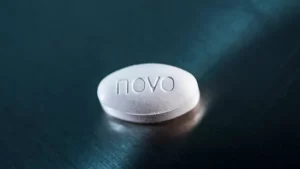Is Eliquis a Blood Thinner? Apixaban Blood Clotting Mechanisms and Side Effects
HOME | BLOOD THINNERS | IS ELIQUIS A BLOOD THINNER? APIXABAN BLOOD CLOTTING MECHANISMS
Eliquis, an anticoagulant, inhibits clotting factors and prevents the formation of blood clots. It is prescribed for conditions like atrial fibrillation and deep vein thrombosis.
Understanding its role as a blood thinner and the associated risks is crucial for safe and effective use. Learn about the mechanism of Eliquis, its common uses, potential side effects, and how to use it for your well-being.
What Is Eliquis? Blood Thinner
Eliquis, also known as apixaban, is an anticoagulant used as a blood thinner. This medication inhibits the production of clotting factors, reducing the risk of blood clots. It is prescribed to treat and prevent conditions such as atrial fibrillation, deep vein thrombosis (DVT), and pulmonary embolism.
Eliquis effectively reduces the risk of systemic embolism and stroke in people with atrial fibrillation, as well as prevents the recurrence of DVT or PE. It is available in 2.5mg and 5mg tablets, with dosages varying based on the specific condition being treated.
However, it is important to note that Eliquis can have serious side effects, including an increased risk of bleeding, and should not be used in individuals with spinal or epidural catheters due to the potential for serious complications.
Eliquis Mechanism of Action; Treating Blood Clots
Eliquis Mechanism of Action: Treating Blood Clots
Eliquis is an anticoagulant that reduces the risk of systemic embolism and stroke in individuals with atrial fibrillation. It also prevents the recurrence of deep vein thrombosis or pulmonary embolism. By inhibiting clotting factors, Eliquis effectively prevents or treats blood clots.
When considering Eliquis for blood clot treatment, it’s important to understand its role as a blood thinner and its potential side effects. Compared to warfarin, Eliquis offers a more predictable anticoagulant effect and a lower risk of bleeding. However, like all blood thinners, there is still a risk of bleeding. Therefore, it is crucial to consult with your healthcare provider to determine the most suitable treatment to maintain healthy blood flow while minimizing the risk of complications.
Common Uses of Eliquis; DVT
Eliquis is an anticoagulant FDA-approved for preventing deep vein thrombosis (DVT), a dangerous blood clot that forms in a deep vein, typically in the legs. It is commonly used to prevent DVT from recurring and after hip or knee replacement surgery, reducing the risk of DVT and pulmonary embolism following these procedures.
Compared to other anticoagulants such as warfarin and Xarelto, Eliquis effectively prevents blood clots and strokes, reduces blood clotting time, and aids in breaking down existing blood clots. It also carries a lower risk of side effects and bleeding compared to warfarin, while its risk of bleeding is similar to Xarelto.
Side Effects of Eliquis
Side Effects of Eliquis
If you’ve been using Eliquis to prevent deep vein thrombosis or after hip or knee replacement surgery, it’s important to be aware of the potential side effects associated with this medication. Here are some key points to consider:
- Eliquis may increase the risk of bleeding and stroke if stopped prematurely.
- Consult your healthcare provider before undergoing dental procedures or stopping Eliquis.
- Serious adverse effects may include spinal or epidural blood clots, so be vigilant for any unusual reaction to Eliquis.
Being aware of possible side effects and taking necessary precautions can help you manage your treatment effectively and stay safe while using Eliquis. Seek medical advice if you experience concerning symptoms or have questions about your medication.
Dosage Guidelines for Eliquis ( Apixaban)
Dosage Guidelines for Eliquis (Apixaban)
Initial dosage for treating deep vein thrombosis (DVT) and pulmonary embolism (PE) is 10 mg twice daily for 7 days, followed by 5 mg twice daily thereafter. The recommended dosage is 2.5 mg twice daily for preventing DVT and PE recurrence. The dosage for preventing DVT after hip or knee replacement surgery varies based on the specific surgical procedure.
To prevent blood clots and stroke in people with atrial fibrillation, the usual dosage is 5 mg twice daily, with a potential lower dosage of 2.5 mg twice daily for specific individuals. Renal dosing may be necessary for individuals with kidney problems, and older adults may require a lower dosage for atrial fibrillation prevention.
Remember, if a dose is missed, take it as soon as possible without doubling the dose, and long-term use of Eliquis depends on the specific condition being treated.
Taking Eliquis and Other Drug Interactions
To ensure your safety while taking Eliquis, it is crucial to be aware of potential drug interactions that could affect its effectiveness or increase the risk of bleeding. When taking Eliquis, be mindful of the following:
-
Inform Your Healthcare Provider: Share all medications you are taking, including over-the-counter drugs and herbal supplements, to avoid potentially harmful interactions with Eliquis.
-
Watch for Bleeding Risk: Eliquis may cause an increased risk of bleeding when used with aspirin. Seek medical guidance before stopping the drug for heart attack or stroke prevention.
-
Recognize Overdose Symptoms: Look out for signs of Eliquis overdose, such as trouble breathing, unusual bleeding, or dark urine. In case of any unusual symptoms, seek immediate medical attention to stay safe while taking Eliquis.
Eliquis and Hip or Knee Replacement Surgery
Eliquis is given after hip or knee replacement surgery to reduce the risk of developing deep vein thrombosis (DVT) and pulmonary embolism (PE) by inhibiting clot formation in the blood. Clinical studies have shown that Eliquis effectively lowers the risk of DVT and PE, which are more likely to occur after these surgeries.
Eliquis is an FDA-approved medication designed to prevent blood clots associated with this type of surgical procedure. If you experience any unusual bleeding or signs of bleeding, it is important to contact your doctor immediately. Here is a summary of Eliquis and hip or knee replacement surgery:
- Eliquis administration: Given after hip or knee replacement surgery.
- Reduced risk of DVT and PE: Eliquis lowers the risk of developing DVT and PE after these surgeries.
- Effectiveness in clinical studies: Clinical studies have proven the effectiveness of Eliquis in reducing the risk of DVT and PE.
- Contact doctor for signs of bleeding: If you notice any unusual bleeding or signs of bleeding, it is crucial to contact your doctor without delay.
Eliquis Overdose Symptoms
If you suspect an Eliquis overdose, seek immediate medical attention as prompt treatment is crucial to manage excessive bleeding.
Eliquis Overdose Symptoms
- Signs of Eliquis overdose may include excessive bleeding, which can manifest as prolonged bleeding from minor cuts or injuries.
- Other symptoms may include increased bruising, blood in urine or stool, or bleeding from the gums or nose.
- Severe Eliquis overdose may lead to life-threatening bleeding in various parts of the body, such as the brain, digestive tract, or lungs.
Remember that Eliquis is a blood thinner that helps stop blood clots from forming. Taking a blood thinner like Eliquis can cause possible side effects and may interact with other medications. If you experience any adverse effects, stop taking the drug and seek immediate medical attention.
Managing Eliquis Storage
If you have been informed about the symptoms of Eliquis overdose, it is important to know how to properly store your medication. Eliquis, a blood thinner, should be stored at room temperature, away from light and moisture. Keep it in its original packaging, tightly closed, and out of reach of children.
Avoid storing it in the bathroom or kitchen to prevent exposure to moisture. Do not freeze Eliquis and discard any medication that has been exposed to extreme temperatures. If you are unsure about the storage conditions, consult a pharmacist or healthcare provider for guidance. Properly managing Eliquis storage is crucial to ensure the effectiveness of the medication and prevent any adverse effects.
FDA Warnings for Eliquis
FDA Warnings for Eliquis
The FDA has issued warnings regarding the use of Eliquis, highlighting potential risks and precautions for patients. It’s crucial to be aware of these warnings and take necessary steps to ensure your safety while using this medication. Here are important points to consider:
-
Risk of Blood Clots or Stroke: Stopping Eliquis treatment prematurely can increase the risk of blood clots or stroke, so consult your doctor before making any changes.
-
Spinal Procedures: There is a risk of spinal blood clots associated with Eliquis use, particularly following spinal procedures.
-
Bleeding Risks: Serious and life-threatening bleeding is a potential complication of using Eliquis, necessitating strict adherence to prescribed usage to avoid complications.
These warnings emphasize the importance of closely following medical guidance to prevent adverse effects when using Eliquis.
Eliquis and Pregnancy
Caution and thorough consultation with your healthcare provider are essential when considering the potential risks of Eliquis during pregnancy. Eliquis, a blood thinner, can increase the time it takes for blood to clot. It is important to ask your doctor about the safety of taking Eliquis during pregnancy.
Apixaban should not be taken during pregnancy. If you take apixaban and are planning a pregnancy or you become pregnant while taking it, speak to your doctor or specialist. You will need to be changed to a different medicine.
https://www.nhs.uk/medicines/apixaban/pregnancy-breastfeeding-and-fertility-while-taking-apixaban/#:
However, it is not recommended for use during pregnancy due to the potential risk of bleeding. Well-controlled studies on the use of Eliquis in pregnant women have not been conducted, and its safety and effectiveness during labour and delivery have not been tested.
If you are breastfeeding, it is advised to consult with your doctor before continuing to nurse or take Eliquis, as its safety and effectiveness during breastfeeding have not been extensively studied.
Frequently Asked Questions You Should Know About Eliquis
Is Eliquis a Strong Blood Thinner?
Eliquis is a potent blood thinner. It effectively prevents blood clots by inhibiting clotting factors. If you’re taking Eliquis, closely follow your doctor’s instructions and report any unusual bleeding to your healthcare provider.
What Should You Avoid While Taking Eliquis?
While taking Eliquis, avoid using other blood thinners without consulting your doctor. Also, steer clear of NSAIDs, excessive alcohol consumption, and risky activities to reduce the risk of bleeding. Do not make any dietary changes without consulting your healthcare provider.
What Is the Most Common Side Effect of Eliquis?
The most common side effect of Eliquis is easy bruising. Other common side effects include mild bleeding and nausea. It’s important to stay vigilant for any unusual bleeding and report it to your doctor.
What Is the Safest Blood Thinner to Use?
The safest blood thinner depends on your medical condition and individual factors. Your doctor will assess your risk of bleeding and clotting to determine the best option for you.



